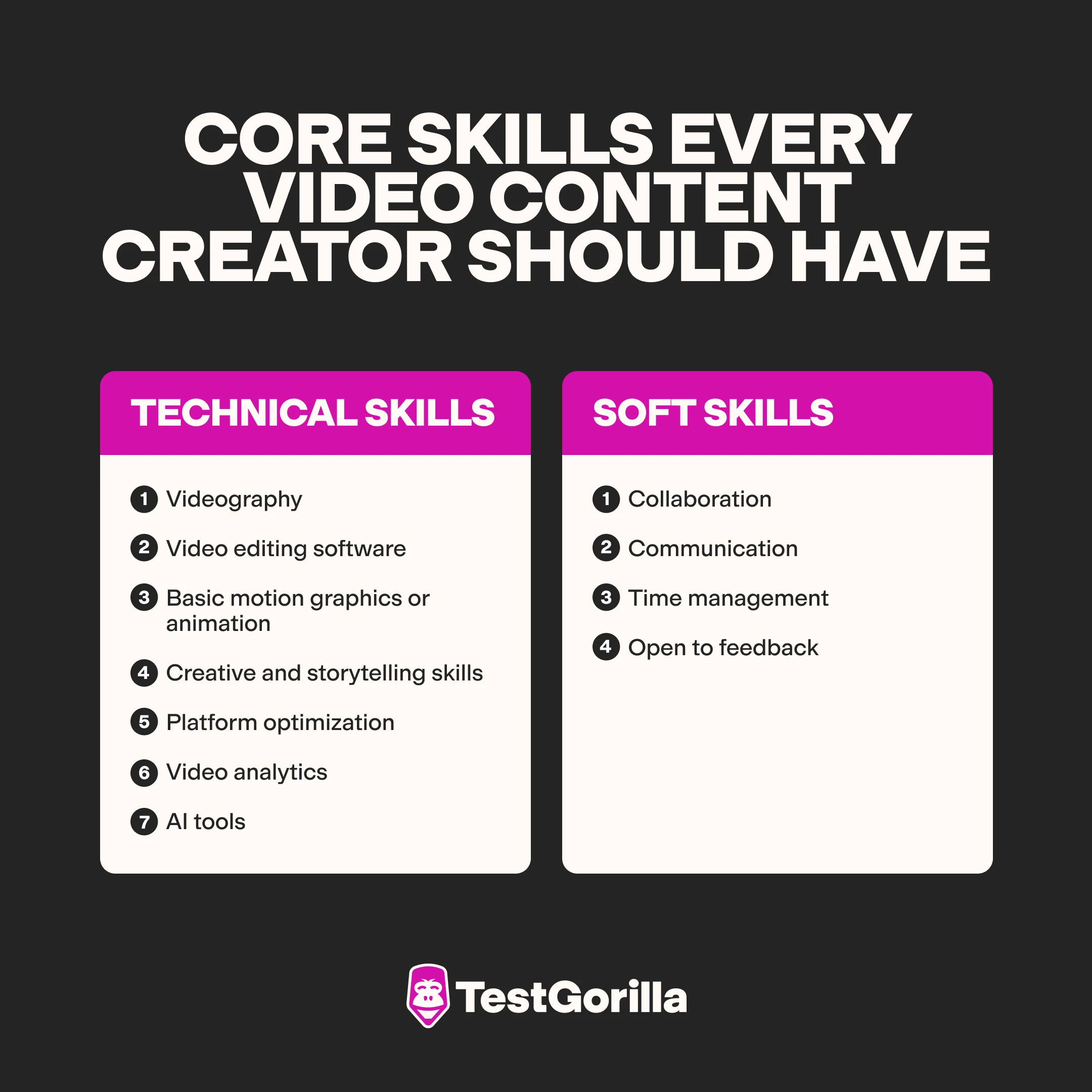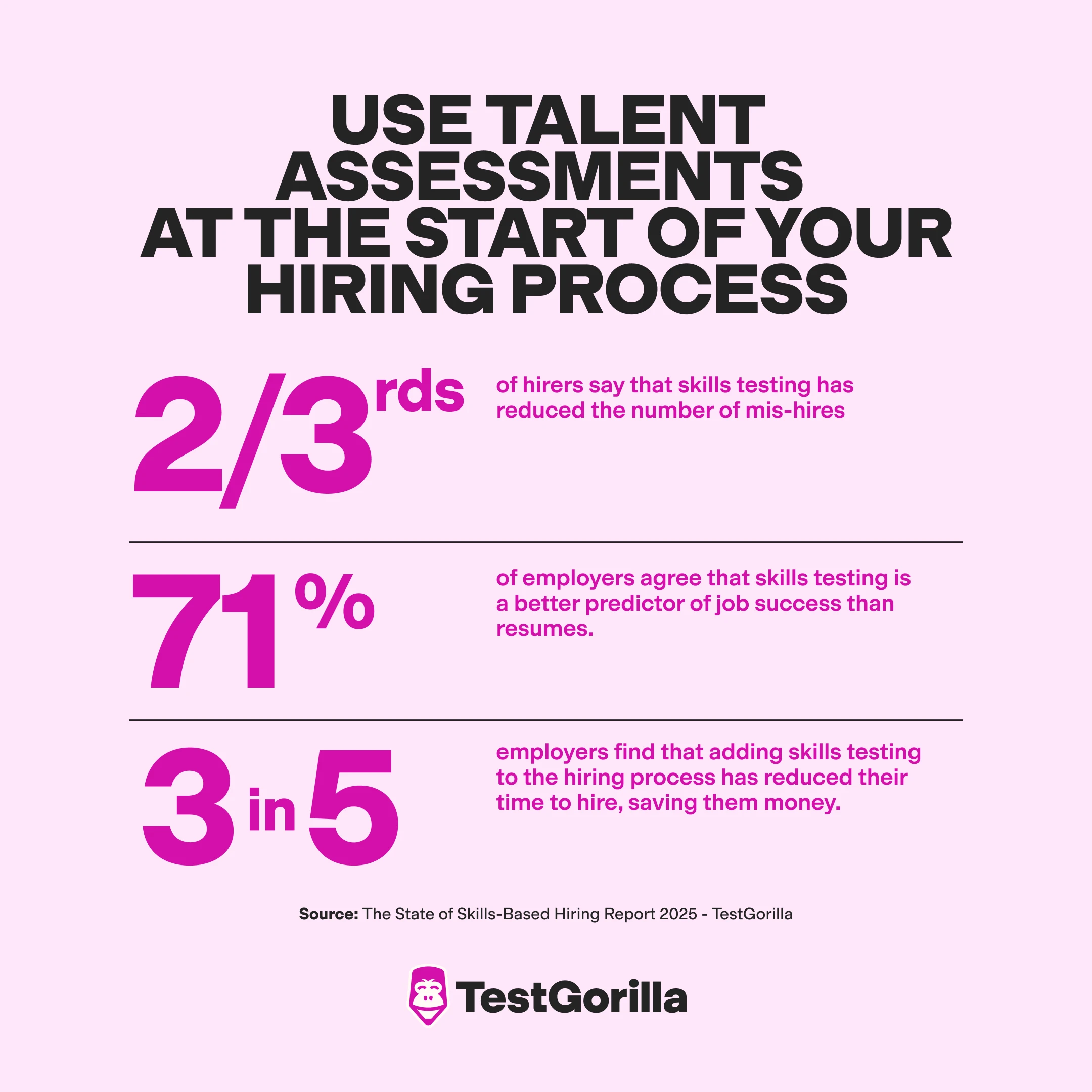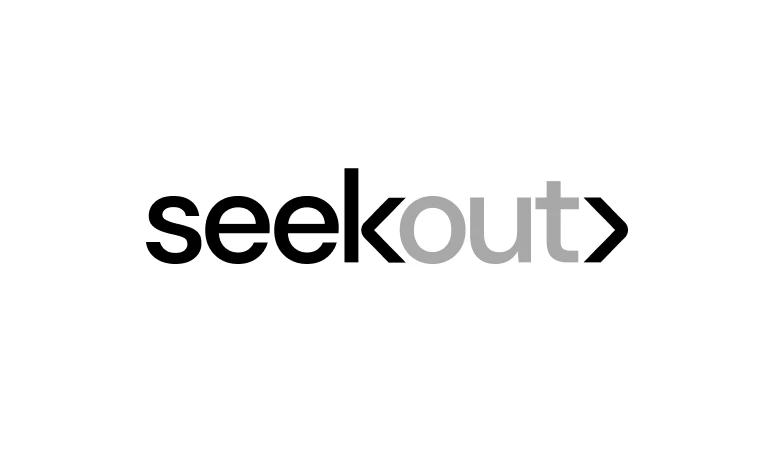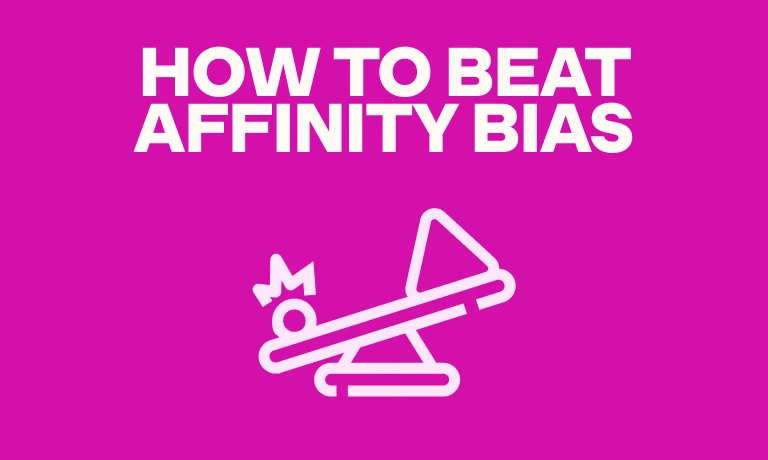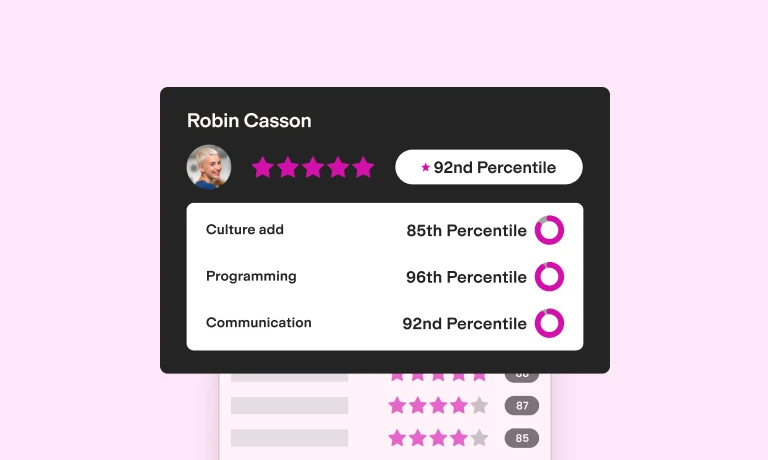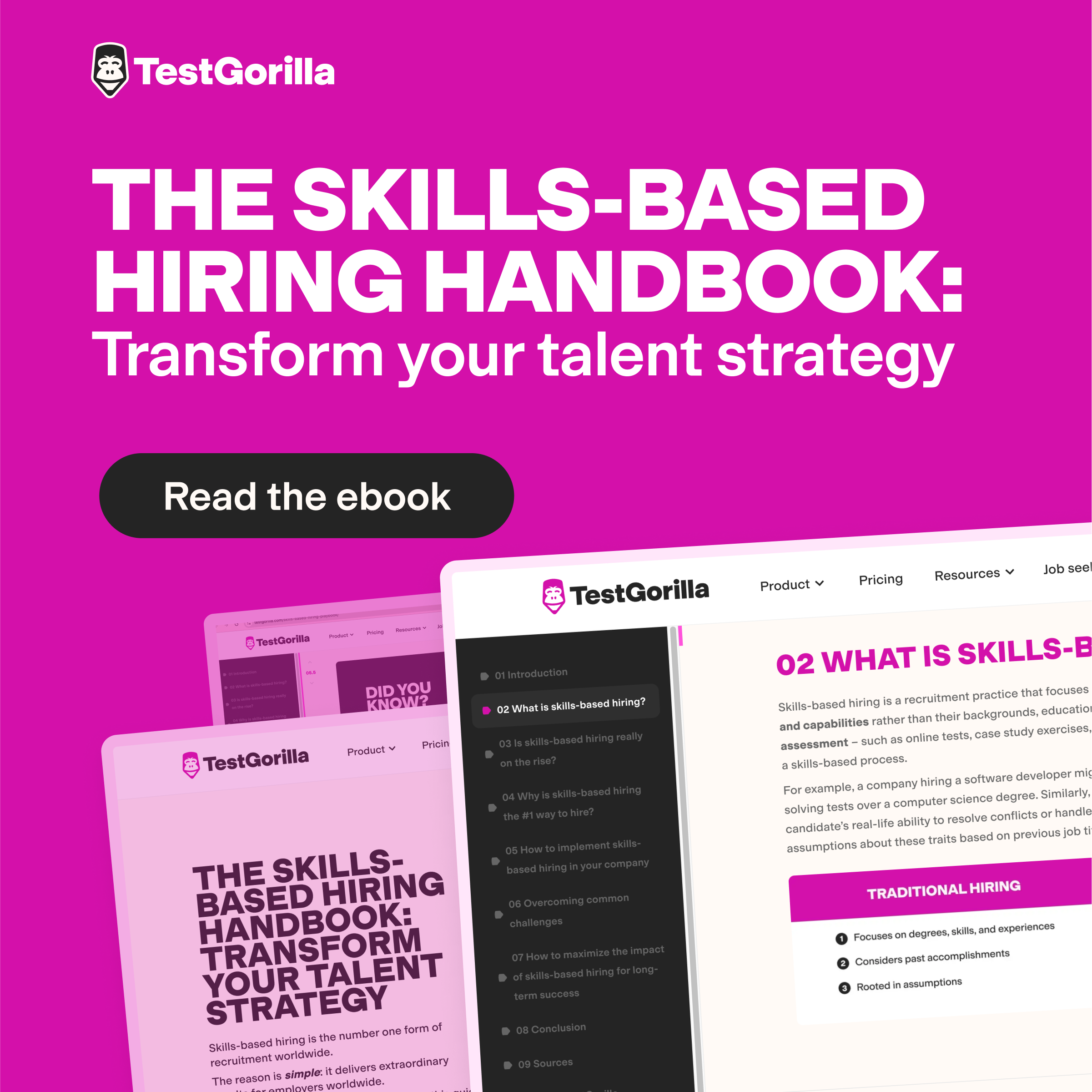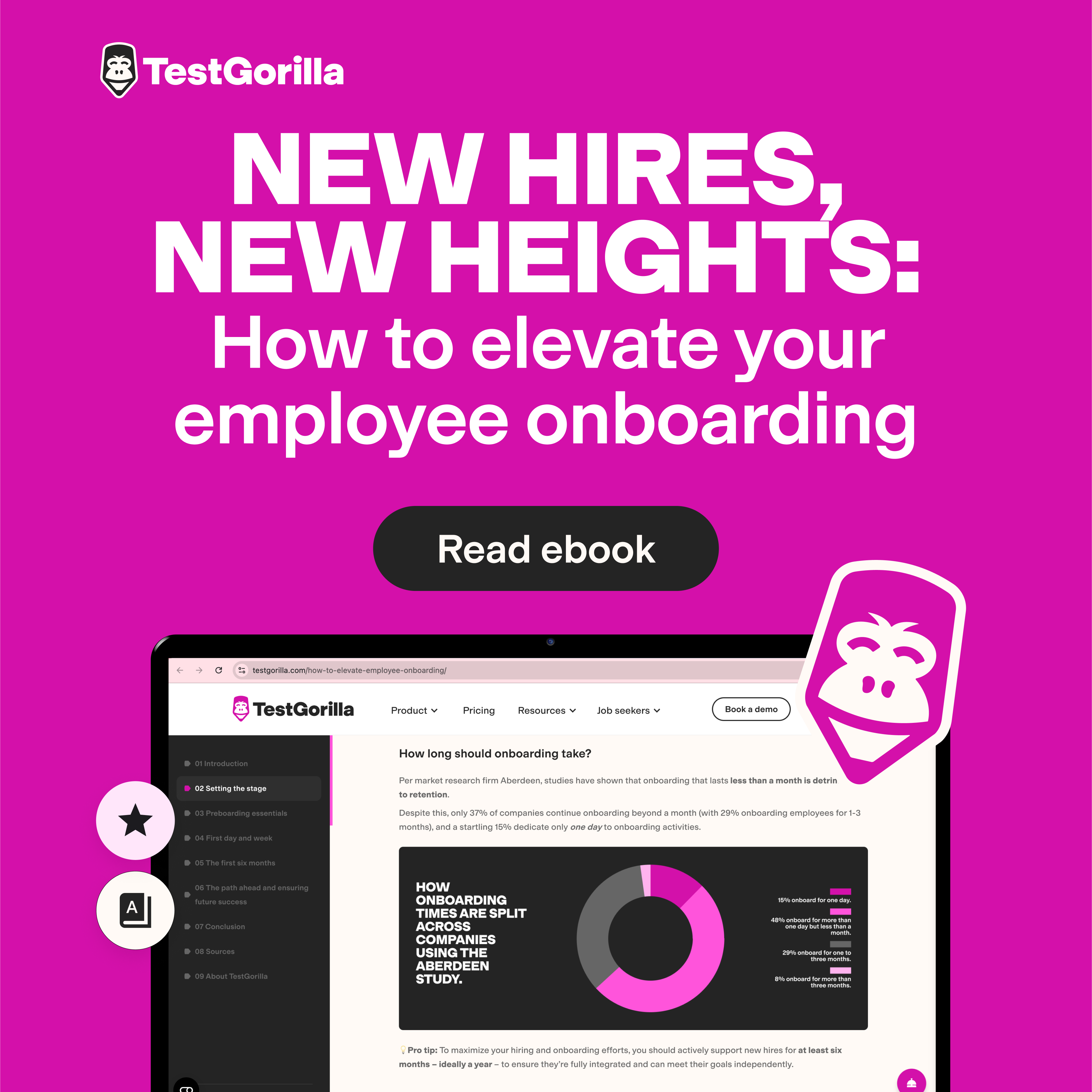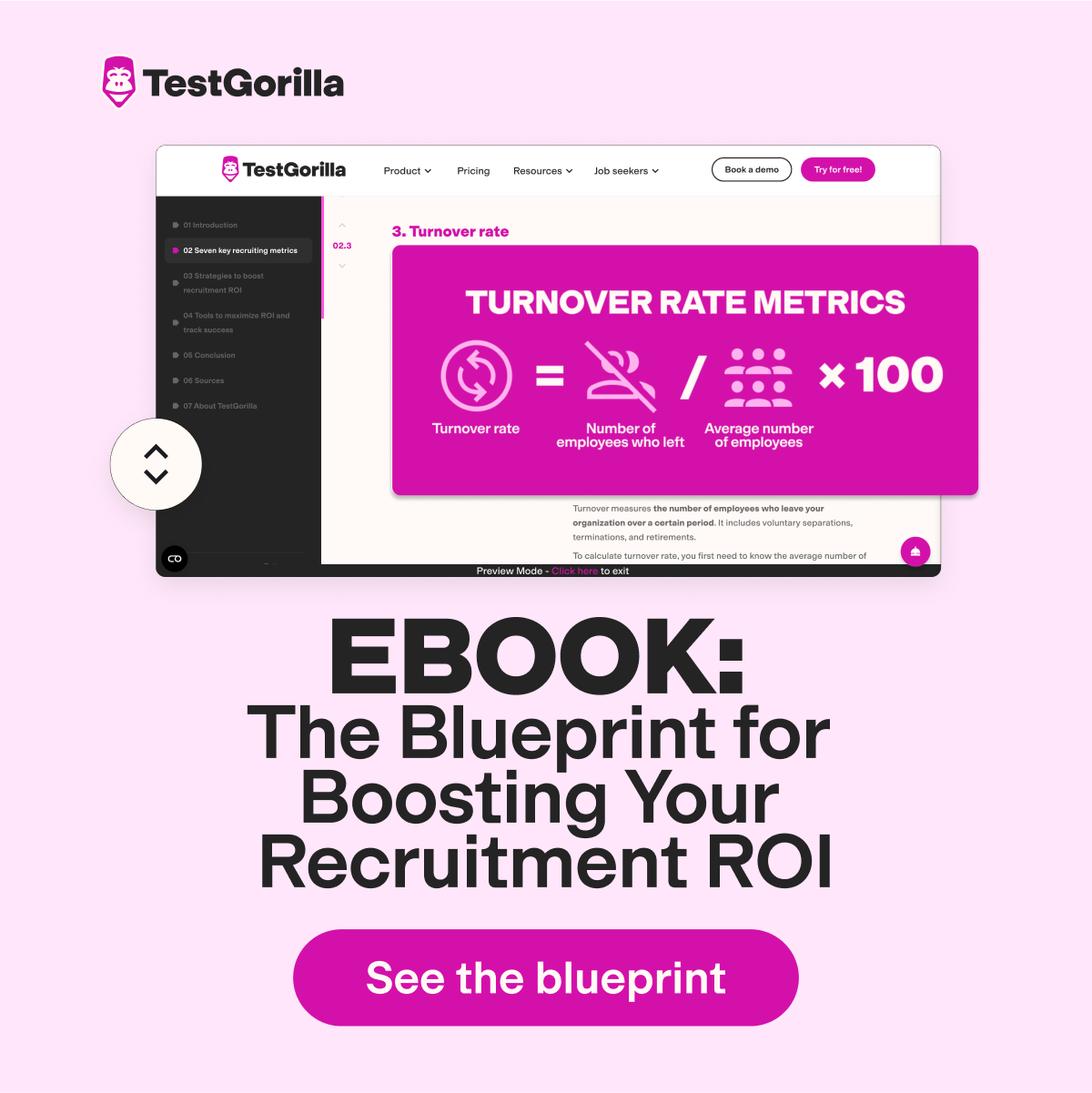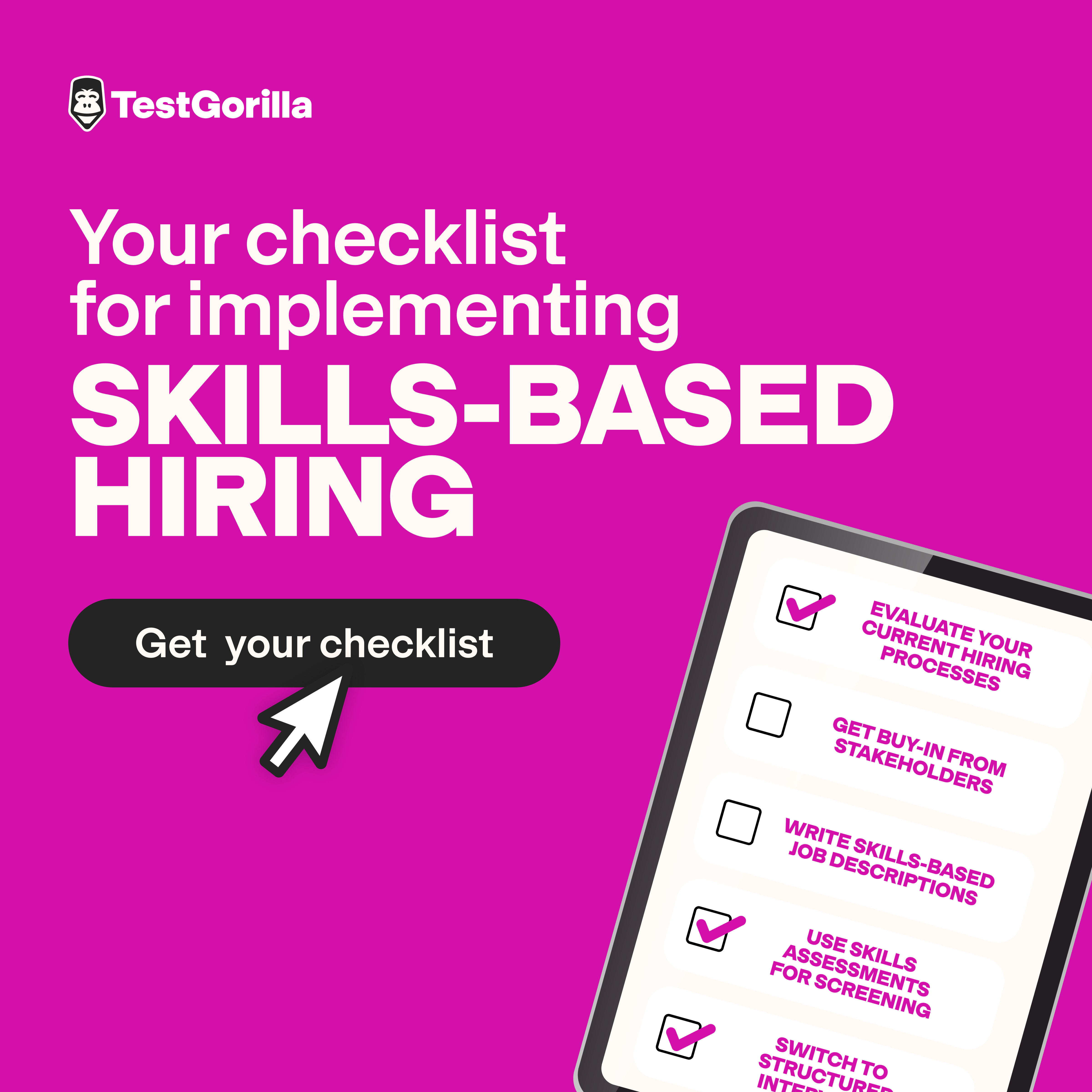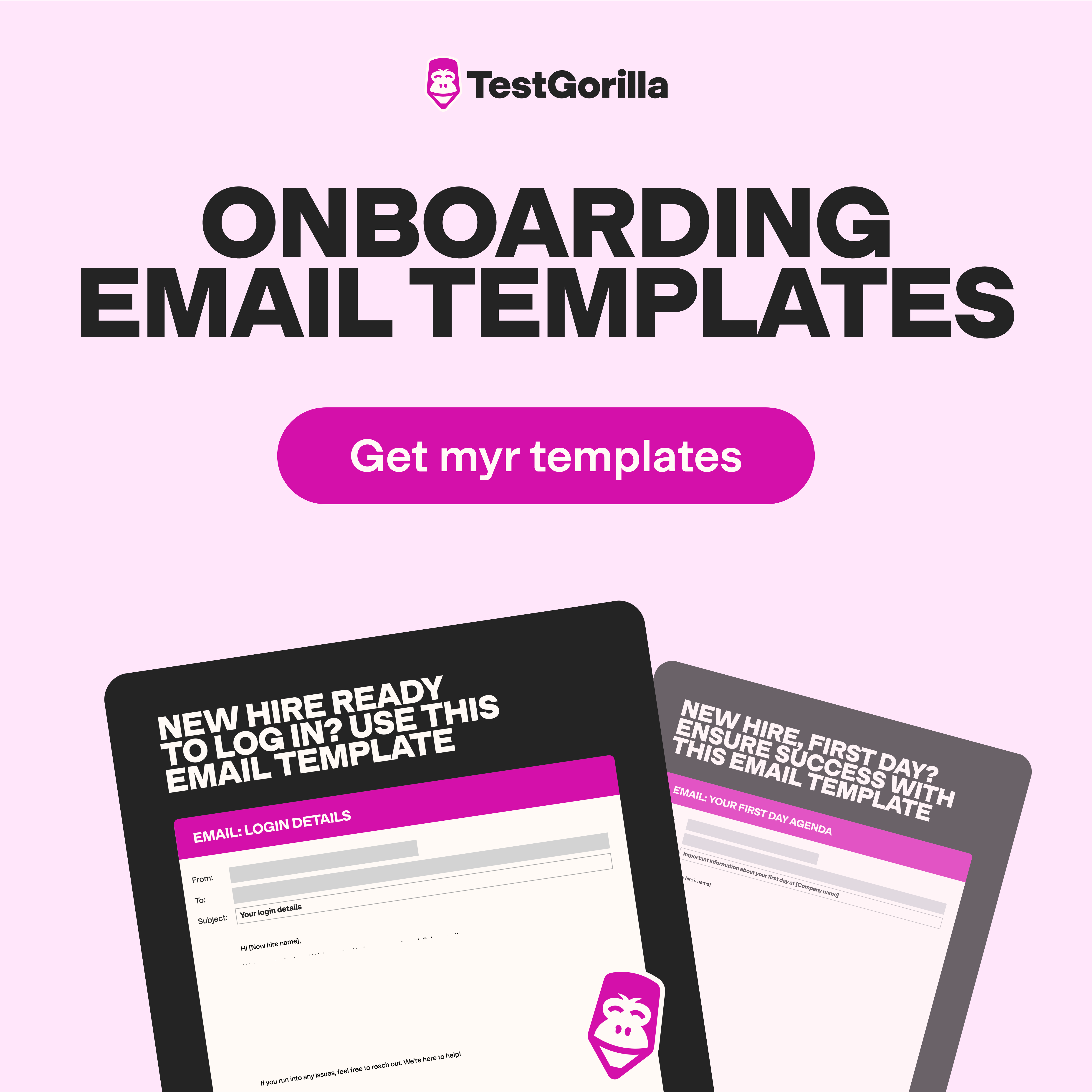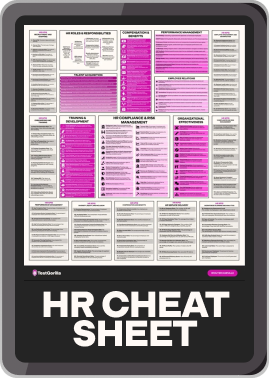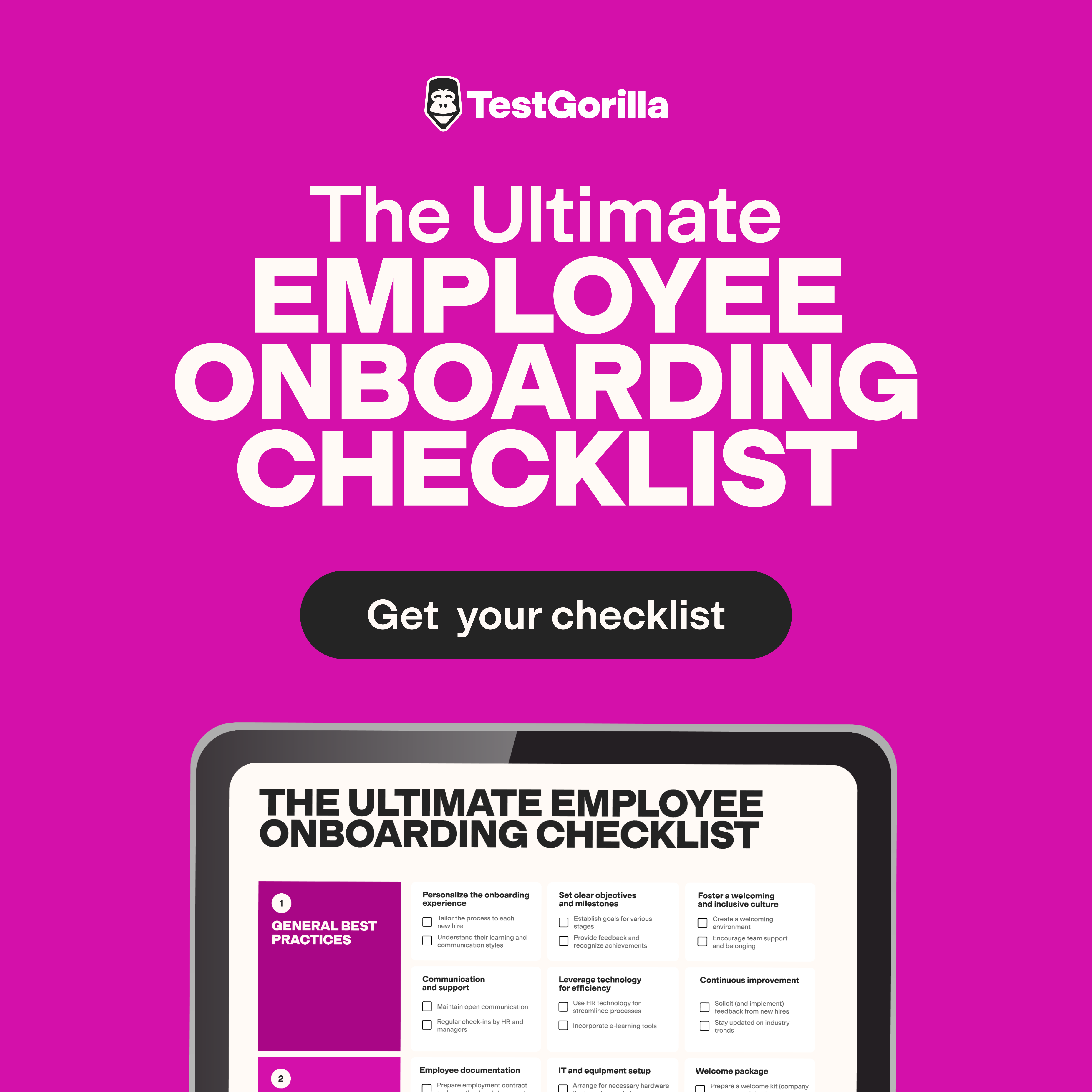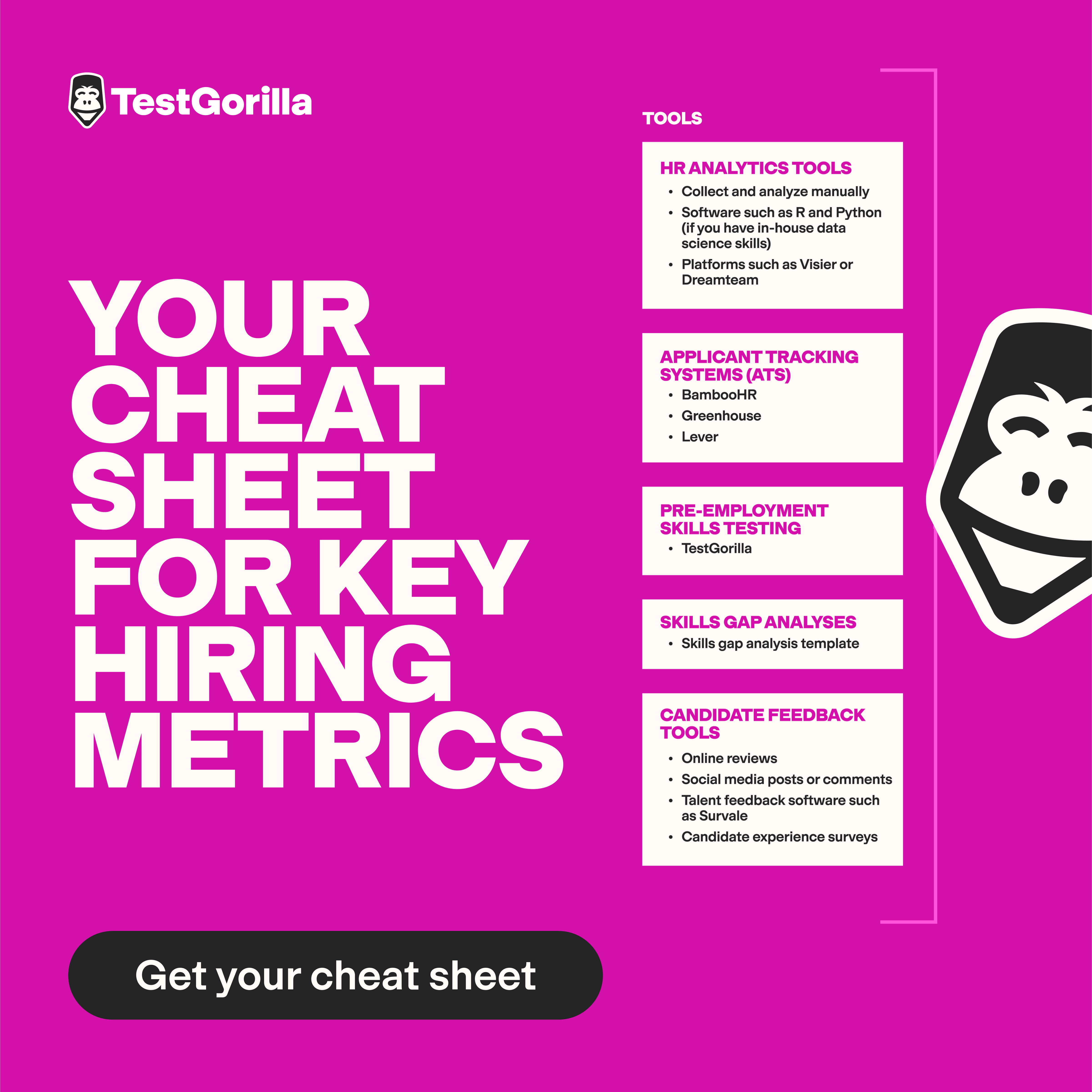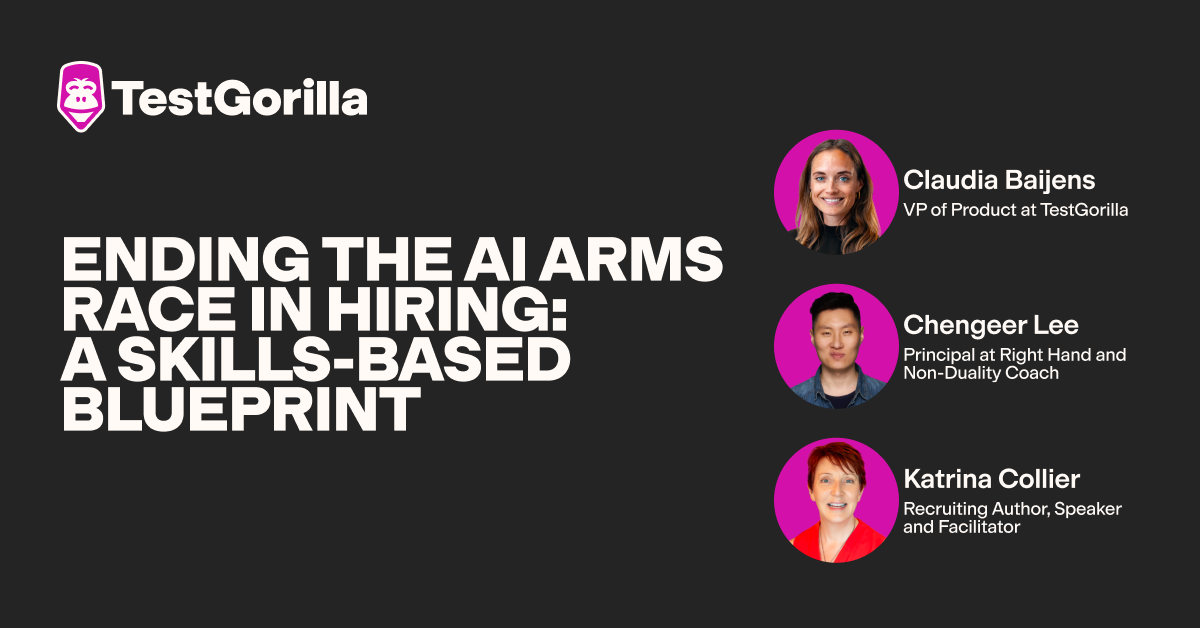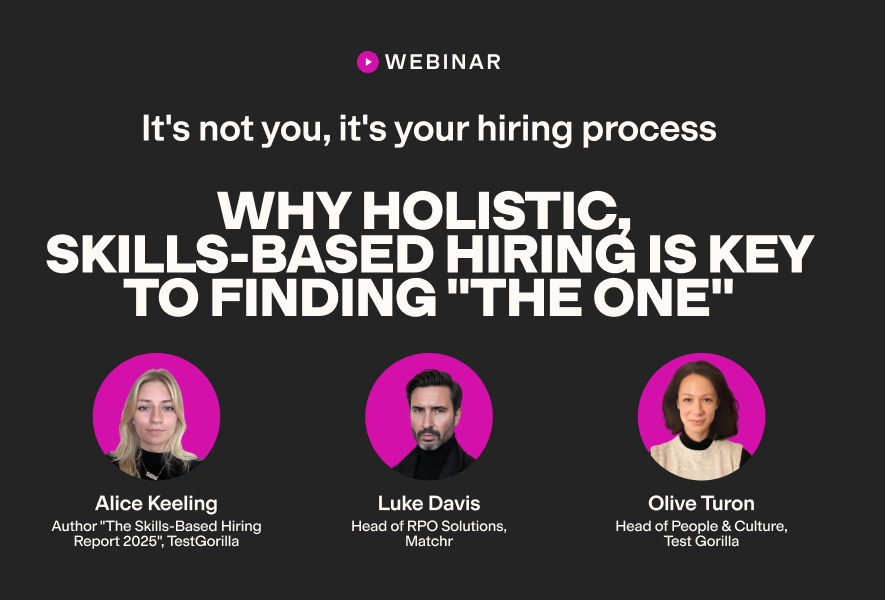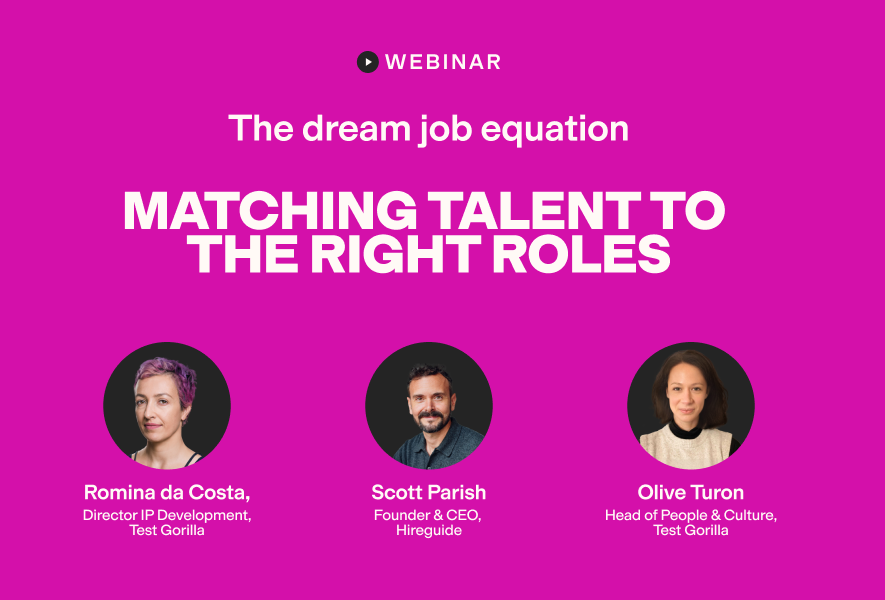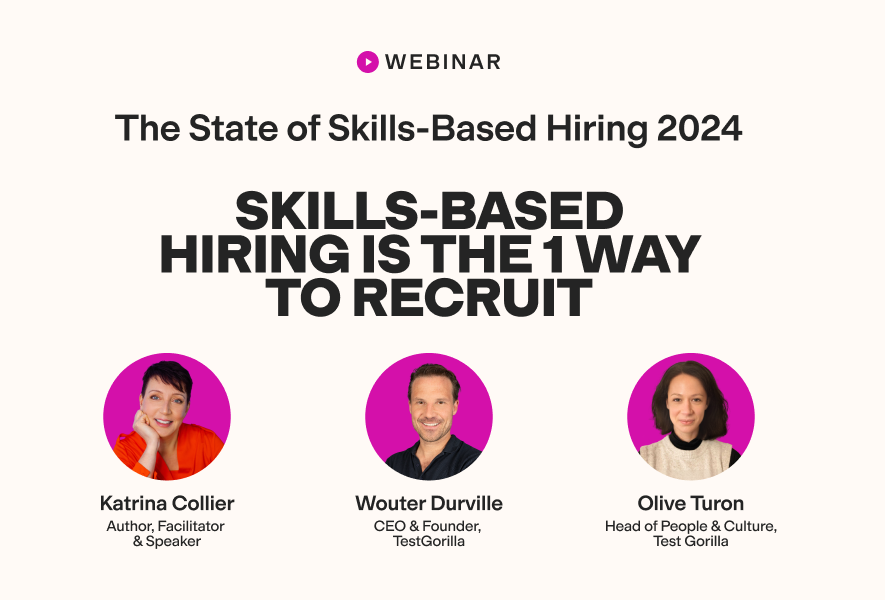Hiring a video content creator can jumpstart your brand storytelling, audience engagement, and business growth. Just ask DS Laboratories: The skin and haircare company saw a 470-fold increase in revenue from its TikTok Shop launch baseline and a 50% month-over-month growth result thanks to its TikTok marketing and sales strategy.
But finding the right video content creator – someone with the right balance of creative vision and business instinct to deliver authentic, on-brand messaging on time and within budget – isn’t always easy.
The solution? A skills-first hiring approach.
Our expert guide below shows you how to assess video content creation skills, including with our Video Content Creator test, to find the perfect candidate for your open role.
What makes a great video content creator? Key skills to look for
When hiring video content creators, you need to find someone with the right combination of skills to plan, shoot, and edit compelling content. Here are the key capabilities to look out for:
Technical skills
Technical skills should be front and center when hiring a video content creator.
They need strong videography skills to know how to shoot the content they’ll work with – for example, on camera or using a smartphone. They should understand shot planning, good framing and composition, and effective lighting and audio recording.
A familiarity with the relevant video editing software you use is also crucial (e.g., DaVinci Resolve, Adobe Premiere Pro, and Final Cut Pro are popular video editing tools). They should know how to use these programs to cut and sequence clips, color grade video, sync audio and video, and add brand overlays, captions, and voiceovers.
On the technical side, they also need to be familiar with optimizing for key social media platforms, including YouTube, TikTok, and Instagram. This includes setting the right frame rate, resolution, and aspect ratio, as well as making videos accessible with features like captions. A deep knowledge of platform algorithms and what makes content perform well on each platform is also useful.
Video analytics skills are also important. Publishing a video isn’t the end of the process. Your new hire also needs to understand video performance based on metrics like view counts and retention rates.
A good video content creator might simply track basic metrics for each clip. But a great creator will track these metrics and take practical insights from them. For example, if metrics show viewers dropping off after the first 15 seconds of a video, this suggests the hook isn’t strong enough and needs to be redone.
Finally, top video content creators need to be great creative storytellers. They should have a deep understanding of the narrative flow – how to grab attention, engage the viewer, and land a message.
A classic example of this is Dove’s 2013 Real Beauty Sketches, part of a campaign designed to help women see their true beauty.
Women were asked to describe themselves to a forensic sketch artist, and a stranger then described the woman to the sketch artist. According to Dove, “The one based on the stranger’s portrayal was more beautiful, happier and more accurate.” The moving video quickly went viral and has now been viewed almost 180 million times.
Soft skills
A successful video content creator also has several soft skills that complement their technical abilities.
Firstly, they need to be able to collaborate with the different teams their work will support. They can adapt to each team’s individual needs – for example, the product team when creating an in-depth video that explores a product’s features, and the marketing team when generating short social media videos.
To collaborate effectively, video content creators need to be strong communicators. This includes the teams they support to understand project requirements and video subjects to make them feel at ease in front of the camera.
Time management skills are also crucial. Content creators typically work to strict and sometimes competing deadlines. Finally, your hire should be open and responsive to feedback to ensure they capture the style and tone that best suits your brand.
Why skipping skills testing when hiring a video content creator is risky
Some employers rely on portfolios, resumes, or interviews alone to assess and compare video content creator candidates. But that’s a big mistake.
Portfolios are typical in the industry. Unfortunately, it’s easy to get distracted by a slick one when what matters most to your hiring decision is the impact of the candidate’s work – information that many portfolios don’t provide.
Portfolios also don’t always accurately represent a candidate’s work. For example, a video may have been a team project, rather than something developed by the candidate alone.
Likewise, resumes alone don’t fully capture candidates’ skills, especially since many video content creators are self-taught. If you rely mostly on resumes to screen applicants, you risk ruling out suitable candidates simply because they’re missing a qualification or their resume doesn’t have a certain keyword from your video content creator job description.
Also, the industry tends to use different titles for the same or similar roles (“video editor,” “content producer,” or “videographer”). From these titles alone, it can be hard to get a clear picture of candidates’ actual roles and skills.
Similarly, relying only on basic interview questions rather than targeted, behavioral interview questions gives you limited insights into applicants’ technical video creation and editing skills. A lack of structure in interviews without a clear scoring rubric can also make it difficult to compare candidates fairly. Plus, unconscious bias from the interviewer can affect the process, making it tough to objectively assess and compare candidates.
The best insights on HR and recruitment, delivered to your inbox.
Biweekly updates. No spam. Unsubscribe any time.
Expert strategies for assessing video content creation skills
During our surveys for the 2025 State of Skills-Based Hiring Report, more than 50% of employers told us that determining whether candidates have the right skills is the most challenging part of hiring, despite it being the key to finding superstar hires.
So, what to do? Think of it in four stages. Here’s how to break it down:
1. Know what you’re looking for
Before you can assess video skills, you need to define what success looks like for the role. That means zooming in on the actual work the person will be doing.
Ask yourself:
What platforms and tools will your new hire work with? For example, TikTok videos often need an element of humor (like Duolingo’s meme-friendly clips), while LinkedIn videos (such as Slack’s polished videos) typically present a more professional brand voice.
What types of videos do you need them to produce – long-form, short-form, social media clips, in-depth explainer videos?
What are their expected output and deadlines? Will they produce several short Instagram reels a week, or will they focus on longer-term projects?
Which teams will they be expected to support or collaborate with? Does this require them to have an understanding of a specific issue or niche?
Will the new hire be expected to direct their own work or work independently, or will they work within the broader marketing team? Will they contribute to your broader content strategy or focus solely on video production?
The answers to these questions will reveal a list of must-have skills to look for in candidates.
For example, say you want to hire someone to create LinkedIn videos to establish your founder (and the business) as an industry thought leader. Your answers could reveal these requirements:
Platform and tools: Final Cut Pro and Canva. Videos must suit a polished, professional, yet engaging tone for LinkedIn.
Video types: Experience creating short “taking heads” videos (30–90 seconds) and occasional longer interview-style clips.
Output/deadlines: 2–3 short videos a week, usually with a 3–5-day turnaround, so they must be able to work efficiently under self-direction.
Collaboration: Works directly with the founder and marketing team, requiring high-level communication skills and an ability to grasp complex concepts quickly.
Work style: Works independently with an understanding of how their output supports marketing’s broader content strategy.
2. Use skills assessments
Once you know the capabilities required for the role, you need a fast, bias-free, candidate-friendly way to evaluate them.
That’s where skills assessments come in. Tools like TestGorilla help you measure what matters objectively. Every test, including our Video Content Creator test, is built by experts and scientifically validated, so you can trust the results.
And you’re not limited to just one test. With TestGorilla, you can combine up to five tests to create a custom, multi-layered assessment tailored to the role.
For instance, you can pair the Video Content Creator test with tests for personality, cognitive ability, behavioral traits, or culture add to get a well-rounded view of each candidate – not just what they can do, but how they think and communicate.
Using talent assessments at the start of your hiring process is ideal. It saves everyone time and ensures only the most aligned candidates make it to the interview stage.
Testing for skills first works wonders: - Two-thirds of hirers say that skills testing has reduced the number of mis-hires. - Most employers (71%) agree that skills testing is a better predictor of job success than resumes. - 3 in 5 employers find that adding skills testing to the hiring process has reduced their time to hire, saving them money. → Discover more in our 2025 State of Skills-Based Hiring Report. |
|---|
3. Run trial tasks to see candidates in action
While portfolios showcase what a candidate has produced, skills assessments confirm the capabilities that contributed to that work. But trial tasks let you see firsthand how candidates work.
And that difference is crucial, especially when you’re hiring for a creative role like this one.
Asking candidates to complete a short, mock assignment in the final stages of your process provides a clear sense of their technical skills, creative thinking, and whether their style aligns with your brand.
For example, you could ask them to draft a TikTok video concept for your product. Then, have them explain which metrics they’d track to measure success. This way, you’ll learn how they approach storytelling and strategy.
If you run trials, remember these points:
Keep them short. No one should have to spend hours completing a trial task just to stay on the shortlist for a job. A simple, focused task is enough to get the insights you need while avoiding candidates losing interest in working with you. The right length of time for a task depends on the nature of the task and whether it’s paid.
Pay when you can. Compensating candidates shows you respect their time. It also makes the process more equitable by removing barriers for those who can’t afford to work for free.
Watch for the process, not just the outcome. As Chris Mitchell, founder and CEO of Intelus Agency, advises, “Pay close attention to their communication, turnaround time, and how well they listen to feedback.”
4. Add behavioral questions to your interviews
Interviews can be valuable, but only if you ask the right questions.
This means moving beyond generic or vague prompts like “What are your strengths and weaknesses?” to targeted, behavioral questions that reveal how they solve problems, adapt, and collaborate.
For your video content creator candidates, try these questions:
Can you walk me through a video project you’re particularly proud of? What were the goals, and what was your contribution to the project?
How do you keep up with changing specs and algorithms across platforms?
Describe a time when you had to modify a project last-minute due to feedback. What did you do? What did you learn from the experience?
Need some more question ideas? Check out our list of interview questions to test video content creation skills.
Skills testing is key to hiring your next video content creation star
Skills testing is the best way to reduce the risk of a mis-hire when looking for your next video content creator. But knowing where to start can be tricky.
Set yourself up for success by identifying the exact skills your new hire needs. Then, use a talent assessment platform like TestGorilla to evaluate core capabilities, give candidates a short, practical task that showcases their skills in action, and ask insightful behavioral questions during interviews.
With a complete picture of candidates’ technical skills, creative process, and visual communication abilities, you’ll have no problem hiring your next brand storyteller with confidence. Want to get started ASAP? Sign up for a free TestGorilla account or book a free demo today.
Related posts
You've scrolled this far
Why not try TestGorilla for free, and see what happens when you put skills first.


